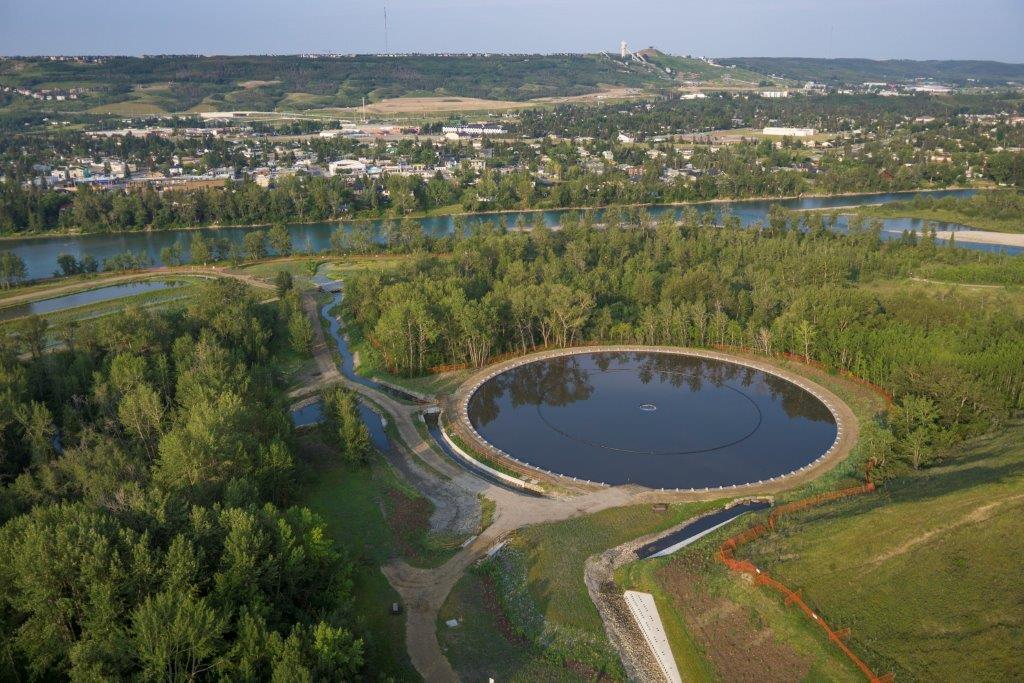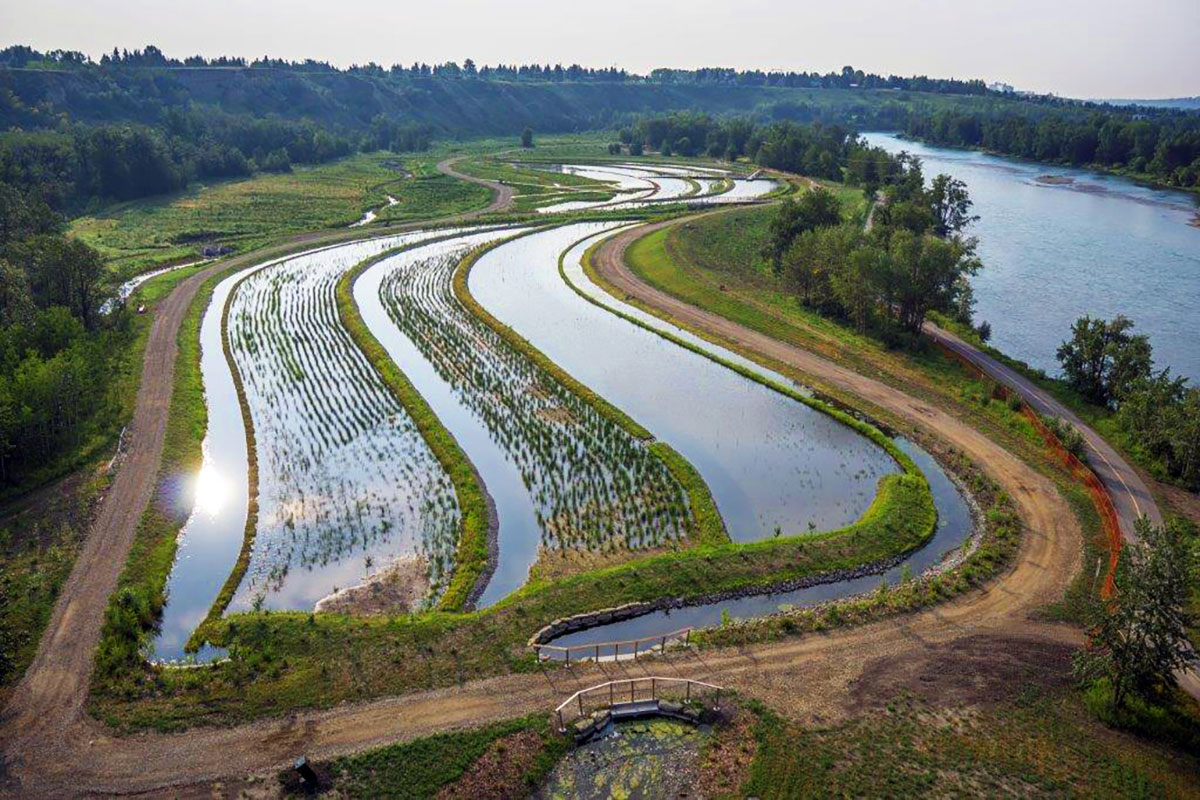Dale Hodges Park
Background
Dale Hodges Park is the site of the former Klippert gravel pit. The City purchased the land to restore the environmental health of the area, and realized an opportunity to address the stormwater pipes carrying untreated stormwater into the Bow River. This project is a unique collaboration between Parks, Water Resources and Public Art.
The park is located along the northern bank of the Bow River and treats the stormwater (runoff from rain or melting snow) flowing from neighbouring communities in northwest Calgary before it enters the Bow River.
The park makes the stormwater treatment process visible as it travels to the Bow River. The project shows citizens how stormwater is managed and aims to inspire curiosity and a deeper understanding of how our natural and manmade systems interact.
The stormwater treatment system is estimated to reduce sediment in stormwater by 50 per cent, helping to protect our river system.

Image courtesy of Wilco Contractors Southwest
Concept to Creation
Embedding artists into the infrastructure design team is an innovative approach to public art project management. Sans façon (lead artist team for WATERSHED+) worked with engineers, landscape architects and consultants to create a unique and engaging space.
The collaborative design team includes:
- The City of Calgary’s WATERSHED+,
- AECOM,
- O2 Planning + Design and
- Source2Source.
Budget
The overall budget for Dale Hodges Park is $26.8 million, which includes costs for:
- the design and construction of the stormwater treatment system ($19.4 million)
- construction of the park ($1.9 million)
- design ($3.3 million)
- the public art ($2.2 million)
Development of the park is a partnership between Water, Parks and Public Art. Funding for the entire space is shared by all these work areas.
The initial investment in Dale Hodges Park was made in 2010 when The City acquired the land from Klippert Concrete. As part of The City's ongoing commitment to environmental sustainability, the ecological integrity of the area was restored while enhancing the park's recreational and educational values. What was once a contaminated gravel pit has now been remediated and transformed into a functional, natural space that not only treats stormwater, but can be enjoyed and explored by Calgarians for generations to come.

Image courtesy of Wilco Contractors Southwest
Artist Statement
We looked at the stormwater treatment as an opportunity rather than an inconvenient necessity, defining the park's character by becoming the driver to generate a landscape and a series of habitats unique to this occasion.
Instead of an invisible system disconnected from citizens, we chose to use the journey of the stormwater and its part in the creation of different habitats to be apparent throughout. The design expresses the stages of this active treatment train and the role of the stormwater management system in a kinetic and expressive way.
All at once the stormwater is creating habitat, being cleaned and expressing the process at work. The park is designed to stimulate the public curiosity throughout, becoming a destination for enjoyment and, in all manner of ways, adding an emotional connection between citizens and their watershed.
Sans façon on WATERSHED+
“When we visited Calgary for the first time in 2006, we were struck by the warmth and energy of the people, a community not afraid of embracing new ideas. It felt then and now like a place where innovation can flourish. We moved our art practice here in 2011 to be part of this, more specifically to work with the City’s world class Utilities and Environmental Protection Department, and the Public Art Program.
Rarely does an organization of this nature have the vision and appetite to pilot and innovate a contemporary approach to art, at this scale and this scope.
WATERSHED+ offers a complementary idea about the traditional role of the artist and how artwork can be created, responsive, and embedded within the work of a utility. Managing water in a city of 1.3 million people is complex and enormous, yet fascinating and so intertwined with our everyday lives. It spans from the immediacy of a moment to planning fifty years ahead, it touches on our physical and psychological connection to the landscape, to nature and to this place. As artists, being able to work in collaboration with the people who plan, design, build and maintain this world is an incredible opportunity to share this fascinating facet of our city and our place in the environment.”
- Tristan Surtees and Charles Blanc, Sans façon

